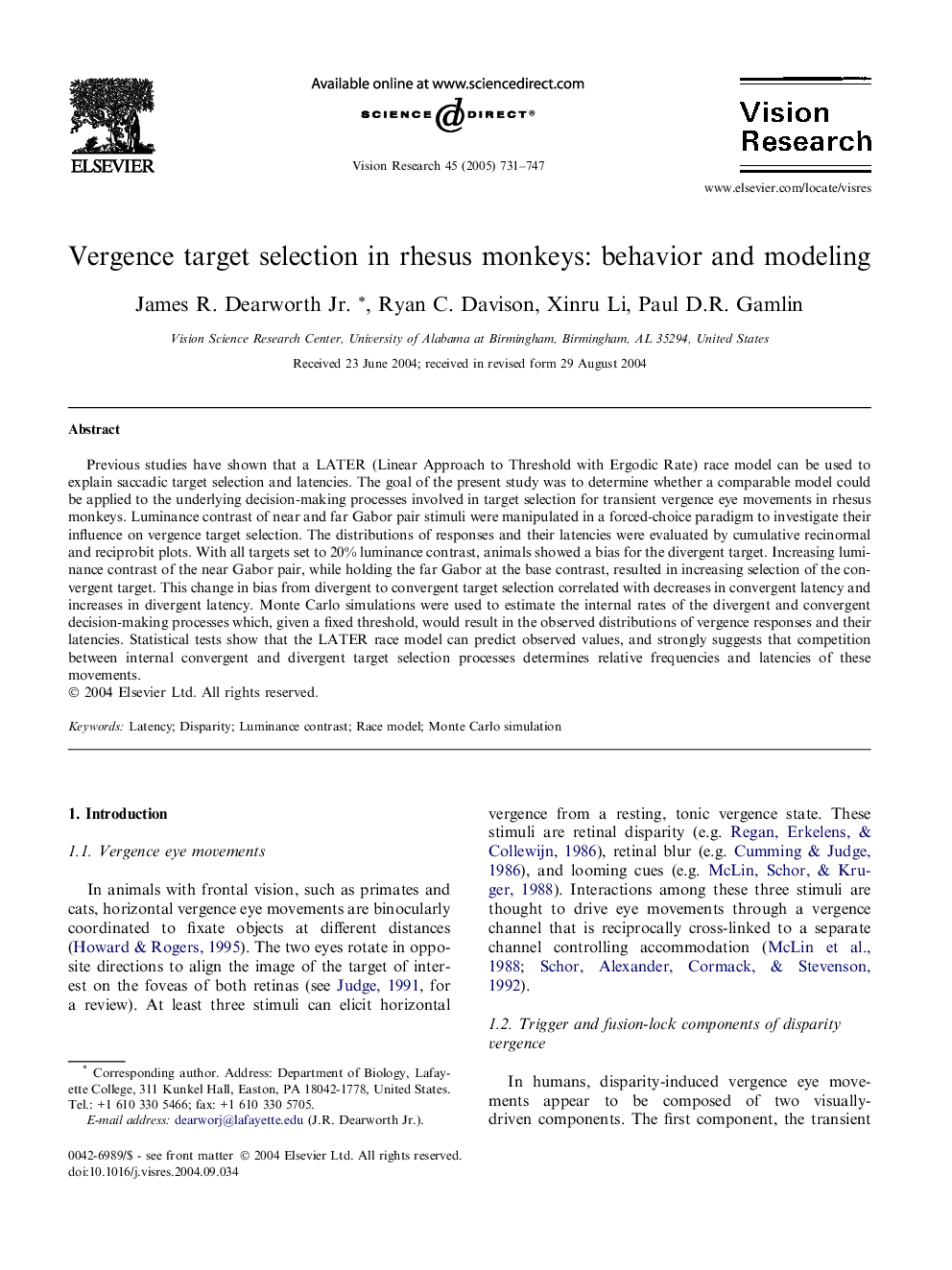| Article ID | Journal | Published Year | Pages | File Type |
|---|---|---|---|---|
| 9348576 | Vision Research | 2005 | 17 Pages |
Abstract
Previous studies have shown that a LATER (Linear Approach to Threshold with Ergodic Rate) race model can be used to explain saccadic target selection and latencies. The goal of the present study was to determine whether a comparable model could be applied to the underlying decision-making processes involved in target selection for transient vergence eye movements in rhesus monkeys. Luminance contrast of near and far Gabor pair stimuli were manipulated in a forced-choice paradigm to investigate their influence on vergence target selection. The distributions of responses and their latencies were evaluated by cumulative recinormal and reciprobit plots. With all targets set to 20% luminance contrast, animals showed a bias for the divergent target. Increasing luminance contrast of the near Gabor pair, while holding the far Gabor at the base contrast, resulted in increasing selection of the convergent target. This change in bias from divergent to convergent target selection correlated with decreases in convergent latency and increases in divergent latency. Monte Carlo simulations were used to estimate the internal rates of the divergent and convergent decision-making processes which, given a fixed threshold, would result in the observed distributions of vergence responses and their latencies. Statistical tests show that the LATER race model can predict observed values, and strongly suggests that competition between internal convergent and divergent target selection processes determines relative frequencies and latencies of these movements.
Related Topics
Life Sciences
Neuroscience
Sensory Systems
Authors
James R. Jr., Ryan C. Davison, Xinru Li, Paul D.R. Gamlin,
